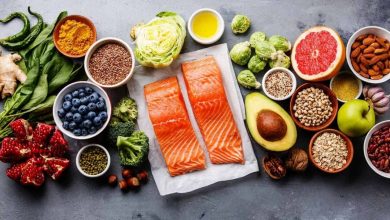How Much Protein Do You Need: High Or Low Protein

We already know that our protein needs include a requirement for quantity.
Which is how many total grams of protein we need to eat, but also a requirement for quality, which means we want to make sure that we get enough of all the essential amino acids in the right proportions.
Another parameter to consider is the bioavailability of the proteins from a particular source.

How much of that protein is digested and absorbed?
This largely depends on inter-individual variability: stomach acidity, enzymatic activity, carriers, and the co-presence of some minerals and vitamins.
But it also depends on how foods are associated.
As you can easily understand if we eat yogurt alone we will absorb more of its proteins than if we eat it together with a high fiber meal.
In some foods, The presence of inhibitors of proteolytic enzymes can decrease protein availability.
Cooking also has an effect.
Cooking increases protein availability from most food both animal and vegetables.
It starts denaturation, softens tissues, and may inactivate inhibitors.
On the other hand, excessive exposure to high temperatures or extended cooking times can degrade proteins and create toxic compounds.
As a general rule of thumb, however, proteins from animal sources are absorbed for over ranges between 70 and 90%.
So how much protein do we need?
We already know that our protein turnover is very high, about 250 grams per day.
But that doesn’t mean we have to get all of those proteins from food.
Amino acids from protein are broken down and recycled. Protein dietary needs are much lower than protein turnover.
So we cannot use the protein turnover to determine how much protein we need to eat.
We just want to match the protein we lose with the protein we eat.
We want to make sure that the amount of protein we lose or catabolize, we bring back. That way we maintain nitrogen balance.

How do we lose protein?
Our primary route of excretion is the urine.
Careful, we do not normally excrete protein themselves in the urine, but we excrete the catabolic products of protein metabolism, such as urea.
By quantifying nitrogen in the urine we can calculate how many grams of protein was broken down to get that amount of urinary nitrogen.
On top of that, we also lose some proteins directly with our feces, skin, hair, nails, sperm. For a healthy person that’s normally a very small amount.
So based on this calculation, we find out that our protein requirement is generally low but also highly variable.
The average adult needs 0.5 grams of protein per kilo of body weight per day.
But since most people are not average, some individuals have needs as low as 0.2 grams per kilo per day, and some others have needs as high as 0.8 grams per kilo per day.
The individual person normally doesn’t know if he needs 0.2, 0.5 or 0.8 per KG of body weight.
Protein is so important, and it is considered that it is much better to have more than you need rather than having less.
The recommended daily allowance for protein is 0.8 grams per kilo of body weight per day for everyone.
In reality, only about 2% of the population really needs 0.8 grams per kilo per day.
Everybody else needs less.
But not knowing, and to be sure that everybody’s covered, we recommend the maximum for everybody.
So to have an idea, if we do this calculation for an average 70 kg adult, we get 70*0.8 = 56 G of protein per day.
When we express protein requirements like this, we also want to make sure that energy intake is adequate.
Make sure that you get enough carbs and fats for energy use.
Otherwise, we will have to divert part of that protein for energy production, and then it’s not enough anymore.
So this recommendation is for efficient protein utilization.
Of course, this calculation is based on healthy body weight.
If you are obese, you don’t make this calculation based on your actual weight, because that would overestimate your protein requirements.
An alternative rule of thumb is to express protein needs as a percent of total energy intake and make sure that proteins account for 10% to 35% of the total calories, which is the acceptable distribution range set for protein by the DRI guidelines.

Body requirement increases protein intake
Growth is one.
Here you need more proteins because you are building new tissues, not just maintaining them.
For this reason, infants, adolescents, and pregnant women all have higher than normal protein needs.
Another situation is resistance training, such as weight training or bodybuilding.
Here you want to build some new muscle, so again you are building new tissue, not just maintaining it, and you’ll need about 10 to 20 grams of extra proteins for it.
Also, if you are ill, injured, or recovering from illness or injury, your protein need will also be higher because you’ll have a lot more repairs to do and because you need to build acute phase proteins to fight infections.
The stress of illness can dramatically increase protein requirements, and some particularly hypercatabolic states, such as burns or trauma, require twice if not three times the average need for a healthy individual.
Meeting protein requirements with a normal diet is easy
This is also true for athletes that turn to expensive protein isolates, high protein bars, and protein shakes.
Most of us have already more than covered our protein requirements before we even get to dinner.
To get a sense of the amounts of proteins that are provided by regular servings of what we normally eat, I will now make you a few examples of food servings, all providing high-quality proteins.
- There are 21 to 25 grams of protein in a 3 ounce serving of meat, poultry, or fish,
- 16 grams of proteins in 2 eggs.
- 11 grams of protein in a 6 ounces container of plain yogurt.
- There are 14 grams of proteins in a 3 ounce serving of tofu.
- A serving of brown rice with lentils provides 19 grams of high-quality protein.
- A slice of whole wheat bread with three tablespoons of chickpeas hummus provides 8 grams of high-quality proteins.
- There are 3 grams of proteins in 5 walnuts.
- There are 4 grams of proteins in a tablespoon of peanut butter.
- If we put two tablespoons of peanut butter on a slice of whole wheat bread, we get 12 grams of proteins,
- If we drink an 8 ounces glass of soy milk together with it, which provides 7 more grams of proteins, we get a total of 19 grams of high-quality proteins.



